An Artificial-Intelligence-Based Renewable Energy Prediction Program for Demand-Side Management in Smart Grids
Abstract
1. Introduction
2. RES Prediction
2.1. Solar Power Prediction (SPP)
2.1.1. Components and Applications of Irradiance
2.1.2. Measured Irradiance Data
2.1.3. Meteorological Data
2.1.4. Local Sky Imaging Data
2.1.5. Mathematical Modelling
| Algorithm 1 Ideal Days Selection Algorithm | |
| Step 1: | Initialize |
| Step 2: | While Do |
| Step 3: | While do: |
| Step 4: | ; |
| Step 5: | ; |
| Step 6: | If Then |
| Step 7: | Ideal:= False; |
| Step 8: | Else If Then |
| Step 9: | Ideal:= False; |
| Step 10: | Else |
| Step 11: | While do: |
| Step 12: | ; |
| Step 13: | If Then |
| Step 14: | Ideal:= False; |
| Step 15: | Break; |
| Step 16: | Else If Then |
| Step 17: | Ideal:= False; |
| Step 18: | Break; |
| Step 19: | Else |
| Step 20: | Ideal:= True; |
| Step 21: | End If; |
| Step 22: | End Do; |
| Step 23: | End If; |
| Step 24: | End Do; |
| Step 24: | End Do; |
| Step 25: | End |
2.1.6. Deep Learning Models
- Single-Hour Model
- (1)
- Model Shorthand Notation: A shorthand notation is used were
- A volumetric convolutional layer with spatially sized filters as , implied by stride ;
- As implied by stride , a volumetric max pooling with spatial size R × P × Q is specified ;
- The temporal convolutional layer has ‘n’ output nodes and is TC(n);
- FC(n) denotes the fully connected layers of ‘n’ output nodes.
- (2)
- Single-Hour Network Model: Through the shorthand notation, the whole framework for the network-constructed single-hour model is Equation (9).
- TCN
- (i)
- By design, the convolutional reuse allows using the same filter map activations and filter weights across the panel.
- (ii)
- The activation of the input feature map is used again because the same input feature map is hard to understand with different filters.
- (iii)
- The same filter weights are used on all input feature maps during batch processing.
2.2. Wind Power Forecasting (WPF)
Minimum Redundancy and Maximum Relevance (mRMR)-Based Feature Selection
| Algorithm 2 M-mRMR | |
| Step 1: | Initialize , ; |
| Step 2: | While Do: |
| Step 3: | The F-statistic values: ; |
| Step 4: | End Do; |
| Step 5: | |
| Step 6: | while do: |
| Step 7: | ; |
| Step 8: | End Do; |
| Step 9: | ; |
| Step 10: | For Do: |
| Step 11: | While Do: |
| Step 12: | ; |
| Step 13: | ; |
| Step 14: | ; |
| Step 15: | End While; |
| Step 16: | ; |
| Step 17: | End For; |
| Step 18: | Return S; |
- The Ordered Weighted Averaging—Weighted Average (OWAWA) Operator
- Physics-Constrained LSTM Model (PC-LSTM)
- OWAWA-CNN-LSTM Forecasting Model
3. Modelling MOACO-Based DRP
3.1. Objective Functions
3.2. Operational Cost Function
3.3. A Prototype of a Smart Grid System
MOACO Algorithm
| Algorithm 3 MOACO | |
| Input: | Production volume, proposed energy price, DG operational and emission costs, the next day’s mean, and variance of WS and SP, and apply for demand from the daily load curve |
| Step 1: | Obtaining the volume of WP and SP from the proposed statical model |
| Step 2: | Set value parameters, number of ants (NA), and iterations (M) |
| Step 3: | Generate a primary population as |
| Step 4: | Calculate fitness function: ; |
| Step 5: | Initialize Pareto archive:= |
| Step 6: | Identify and separate non-dominated results, and store them in the Pareto archive; |
| Step 7: | Initialize all pheromone values to |
| Step 8: | While Do: |
| Step 9: | While Do: |
| Step 10: | Identify new solution S using: |
| Step 11: | For each solution in the current ant population, measure the values of the corresponding objectives; |
| Step 12: | Apply to update local rule using: |
| Step 13: | End Do; |
| Step 14: | Update Pareto archive; |
| Step 15: | While non-dominated solution Pareto archive Do: |
| Step 16: | Apply to update global rule: |
| Step 17: | End Do; |
| Step 18: | End Do; |
4. NWP Simulation and Analysis
5. Conclusions
Author Contributions
Funding
Institutional Review Board Statement
Informed Consent Statement
Data Availability Statement
Conflicts of Interest
References
- Do Prado, J.; Qiao, W.; Qu, L.; Agüero, J. The Next-Generation Retail Electricity Market in the Context of Distributed Energy Resources: Vision and Integrating Framework. Energies 2019, 12, 491. [Google Scholar] [CrossRef]
- Johnson, J.; Quiroz, J.; Concepcion, R.; Wilches-Bernal, F.; Reno, M.J. Power System Effects and Mitigation Recommendations for DER Cyberattacks. IET Cyber-Phys. Syst. Theory Appl. 2019, 4, 240–249. [Google Scholar] [CrossRef]
- Strezoski, L.; Stefani, I. Utility DERMS for Active Management of Emerging Distribution Grids with High Penetration of Renewable DERs. Electronics 2021, 10, 2027. [Google Scholar] [CrossRef]
- Mina-Casaran, J.D.; Echeverry, D.F.; Lozano, C.A. Demand Response Integration in Microgrid Planning as a Strategy for Energy Transition in Power Systems. IET Renew. Power Gener. 2021, 15, 889–902. [Google Scholar] [CrossRef]
- Zhang, Y.; Huang, T.; Bompard, E.F. Big Data Analytics in Smart Grids: A Review. Energy Inform. 2018, 1, 8. [Google Scholar] [CrossRef]
- Regy, P.V.; Sarwal, R.; Stranger, C.; Fitzgerald, G.; Ningthoujam, J.; Gupta, A.; Singh, N. Turning around the Power Distribution Sector: Learnings and Best Practices from Reforms; NITI Aayog, RMI, and RMI India: New Delhi, India, 2021. [Google Scholar]
- Palaniappan, S.; Asokan, R.; Bharathwaj, S.; Sujaudeen, N. Automated Meter Reading System—A Study. Int. J. Comput. Appl. 2015, 116, 39–46. [Google Scholar] [CrossRef]
- Díaz Redondo, R.P.; Fernández-Vilas, A.; Fernández dos Reis, G. Security Aspects in Smart Meters: Analysis and Prevention. Sensors 2020, 20, 3977. [Google Scholar] [CrossRef]
- Khan, A.A.; Razzaq, S.; Khan, A.; Khursheed, F. Owais HEMSs and Enabled Demand Response in Electricity Market: An Overview. Renew. Sustain. Energy Rev. 2015, 42, 773–785. [Google Scholar] [CrossRef]
- Alavi, S.A.; Ahmadian, A.; Aliakbar-Golkar, M. Optimal Probabilistic Energy Management in a Typical Micro-Grid Based-on Robust Optimization and Point Estimate Method. Energy Convers. Manag. 2015, 95, 314–325. [Google Scholar] [CrossRef]
- Zakariazadeh, A.; Jadid, S.; Siano, P. Stochastic Multi-Objective Operational Planning of Smart Distribution Systems Considering Demand Response Programs. Electr. Power Syst. Res. 2014, 111, 156–168. [Google Scholar] [CrossRef]
- Zakariazadeh, A.; Jadid, S.; Siano, P. Economic-Environmental Energy and Reserve Scheduling of Smart Distribution Systems: A Multiobjective Mathematical Programming Approach. Energy Convers. Manag. 2014, 78, 151–164. [Google Scholar] [CrossRef]
- Rezaei, N.; Kalantar, M. Smart Microgrid Hierarchical Frequency Control Ancillary Service Provision Based on Virtual Inertia Concept: An Integrated Demand Response and Droop Controlled Distributed Generation Framework. Energy Convers. Manag. 2015, 92, 287–301. [Google Scholar] [CrossRef]
- Cicek, N.; Delic, H. Demand Response Management for Smart Grids With Wind Power. IEEE Trans Sustain. Energy 2015, 6, 625–634. [Google Scholar] [CrossRef]
- Afshar, K.; Shokri Gazafroudi, A. Application of Stochastic Programming to Determine Operating Reserves with Considering Wind and Load Uncertainties. J. Oper. Autom. Power Eng. 2007, 1, 96–109. [Google Scholar]
- Ininahazwe, H.; Muriithi, C.M.; Kamau, S. Optimal Demand-Side Management for Smart Micro Grid with Storage. J. Power Energy Eng. 2018, 6, 38–58. [Google Scholar] [CrossRef]
- Aghajani, G.R.; Shayanfar, H.A.; Shayeghi, H. Demand Side Management in a Smart Micro-Grid in the Presence of Renewable Generation and Demand Response. Energy 2017, 126, 622–637. [Google Scholar] [CrossRef]
- Trujillo, D.; Garcia Torres, E.M. Demand Response Due to the Penetration of Electric Vehicles in a Microgrid through Stochastic Optimization. IEEE Lat. Am. Trans. 2022, 20, 651–658. [Google Scholar] [CrossRef]
- Dehnavi, E.; Akmal, A.A.S.; Moeini-Aghtaie, M. Developing a Novel Zonal Congestion Management Based on Demand Response Programs Considering Dynamic Transmission Ratings. Int. J. Electr. Power Energy Syst. 2023, 146, 108779. [Google Scholar] [CrossRef]
- Farinis, G.Κ.; Kanellos, F.D. Integrated Energy Management System for Microgrids of Building Prosumers. Electr. Power Syst. Res. 2021, 198, 107357. [Google Scholar] [CrossRef]
- Erenoğlu, A.K.; Şengör, İ.; Erdinç, O.; Taşcıkaraoğlu, A.; Catalão, J.P.S. Optimal Energy Management System for Microgrids Considering Energy Storage, Demand Response and Renewable Power Generation. Int. J. Electr. Power Energy Syst. 2022, 136, 107714. [Google Scholar] [CrossRef]
- Zappa, W.; van den Broek, M. Analysing the Potential of Integrating Wind and Solar Power in Europe Using Spatial Optimisation under Various Scenarios. Renew. Sustain. Energy Rev. 2018, 94, 1192–1216. [Google Scholar] [CrossRef]
- De, M.; Das, G.; Mandal, K.K. An Effective Energy Flow Management in Grid-Connected Solar–Wind-Microgrid System Incorporating Economic and Environmental Generation Scheduling Using a Meta-Dynamic Approach-Based Multiobjective Flower Pollination Algorithm. Energy Rep. 2021, 7, 2711–2726. [Google Scholar] [CrossRef]
- Coddington, O.; Lean, J.L.; Pilewskie, P.; Snow, M.; Lindholm, D. A Solar Irradiance Climate Data Record. Bull. Amer. Meteor. Soc. 2016, 97, 1265–1282. [Google Scholar] [CrossRef]
- Blanc, P.; Espinar, B.; Geuder, N.; Gueymard, C.; Meyer, R.; Pitz-Paal, R.; Reinhardt, B.; Renné, D.; Sengupta, M.; Wald, L. Direct Normal Irradiance Related Definitions and Applications: The Circumsolar Issue. Sol. Energy 2014, 110, 561–577. [Google Scholar] [CrossRef]
- Chu, Y.; Pedro, H.T.C.; Coimbra, C.F.M. Hybrid Intra-Hour DNI Forecasts with Sky Image Processing Enhanced by Stochastic Learning. Sol. Energy 2013, 98, 592–603. [Google Scholar] [CrossRef]
- Florita, A.; Hodge, B.-M.; Orwig, K. Identifying Wind and Solar Ramping Events. In Proceedings of the 2013 IEEE Green Technologies Conference (GreenTech), Denver, Colorado, 4–5 April 2013; IEEE: Piscataway, NJ, USA, 2013; pp. 147–152. [Google Scholar]
- Chu, Y.; Urquhart, B.; Gohari, S.M.I.; Pedro, H.T.C.; Kleissl, J.; Coimbra, C.F.M. Short-Term Reforecasting of Power Output from a 48 MWe Solar PV Plant. Sol. Energy 2015, 112, 68–77. [Google Scholar] [CrossRef]
- Marquez, R.; Coimbra, C.F.M. Intra-Hour DNI Forecasting Based on Cloud Tracking Image Analysis. Sol. Energy 2013, 91, 327–336. [Google Scholar] [CrossRef]
- Du, P. Ensemble Machine Learning-Based Wind Forecasting to Combine NWP Output With Data From Weather Station. IEEE Trans Sustain. Energy 2019, 10, 2133–2141. [Google Scholar] [CrossRef]
- Jo, J.-M. Effectiveness of Normalization Pre-Processing of Big Data to the Machine Learning Performance. J. Korea Inst. Electron. Commun. Sci. 2019, 14, 547–552. [Google Scholar]
- Inman, R.H.; Pedro, H.T.C.; Coimbra, C.F.M. Solar Forecasting Methods for Renewable Energy Integration. Prog. Energy Combust. Sci. 2013, 39, 535–576. [Google Scholar] [CrossRef]
- Pedro, H.T.C.; Coimbra, C.F.M.; Lauret, P. Adaptive Image Features for Intra-Hour Solar Forecasts. J. Renew. Sustain. Energy 2019, 11, 036101. [Google Scholar] [CrossRef]
- Rethage, D.; Pons, J.; Serra, X. A Wavenet for Speech Denoising. In Proceedings of the 2018 IEEE International Conference on Acoustics, Speech and Signal Processing (ICASSP), Calgary, AB, Canada, 15–20 April 2018; IEEE: Piscataway, NJ, USA, 2018; pp. 5069–5073. [Google Scholar]
- Sze, V.; Chen, Y.-H.; Yang, T.-J.; Emer, J.S. Efficient Processing of Deep Neural Networks: A Tutorial and Survey. Proc. IEEE 2017, 105, 2295–2329. [Google Scholar] [CrossRef]
- Peng, H.; Long, F.; Ding, C. Feature Selection Based on Mutual Information Criteria of Max-Dependency, Max-Relevance, and Min-Redundancy. IEEE Trans. Pattern Anal. Mach. Intell. 2005, 27, 1226–1238. [Google Scholar] [CrossRef] [PubMed]
- Yager, R.R.; Filev, D.P. Induced Ordered Weighted Averaging Operators. IEEE Trans. Syst. Man Cybern. Part B (Cybernetics) 1999, 29, 141–150. [Google Scholar] [CrossRef]
- Mazzola, S.; Astolfi, M.; Macchi, E. A Detailed Model for the Optimal Management of a Multigood Microgrid. Appl. Energy 2015, 154, 862–873. [Google Scholar] [CrossRef]
- Kanchev, H.; Lu, D.; Colas, F.; Lazarov, V.; Francois, B. Energy Management and Operational Planning of a Microgrid with a PV-Based Active Generator for Smart Grid Applications. IEEE Trans. Ind. Electron. 2011, 58, 4583–4592. [Google Scholar] [CrossRef]
- The website belongs to Ministry of New and Renewable Energy (MNRE), Government of India. Available online: https://mnre.gov.in/ (accessed on 8 March 2023).
- Climate Research & Services. Data Supply Portal, Version 4.0. Available online: https://Dsp.Imdpune.Gov.In/ (accessed on 1 March 2019).
- Swaminathan, D.; Rajagopalan, A. Multi-Objective Golden Flower Optimization Algorithm for Sustainable Reconfiguration of Power Distribution Network with Decentralized Generation. Axioms 2023, 12, 70. [Google Scholar] [CrossRef]
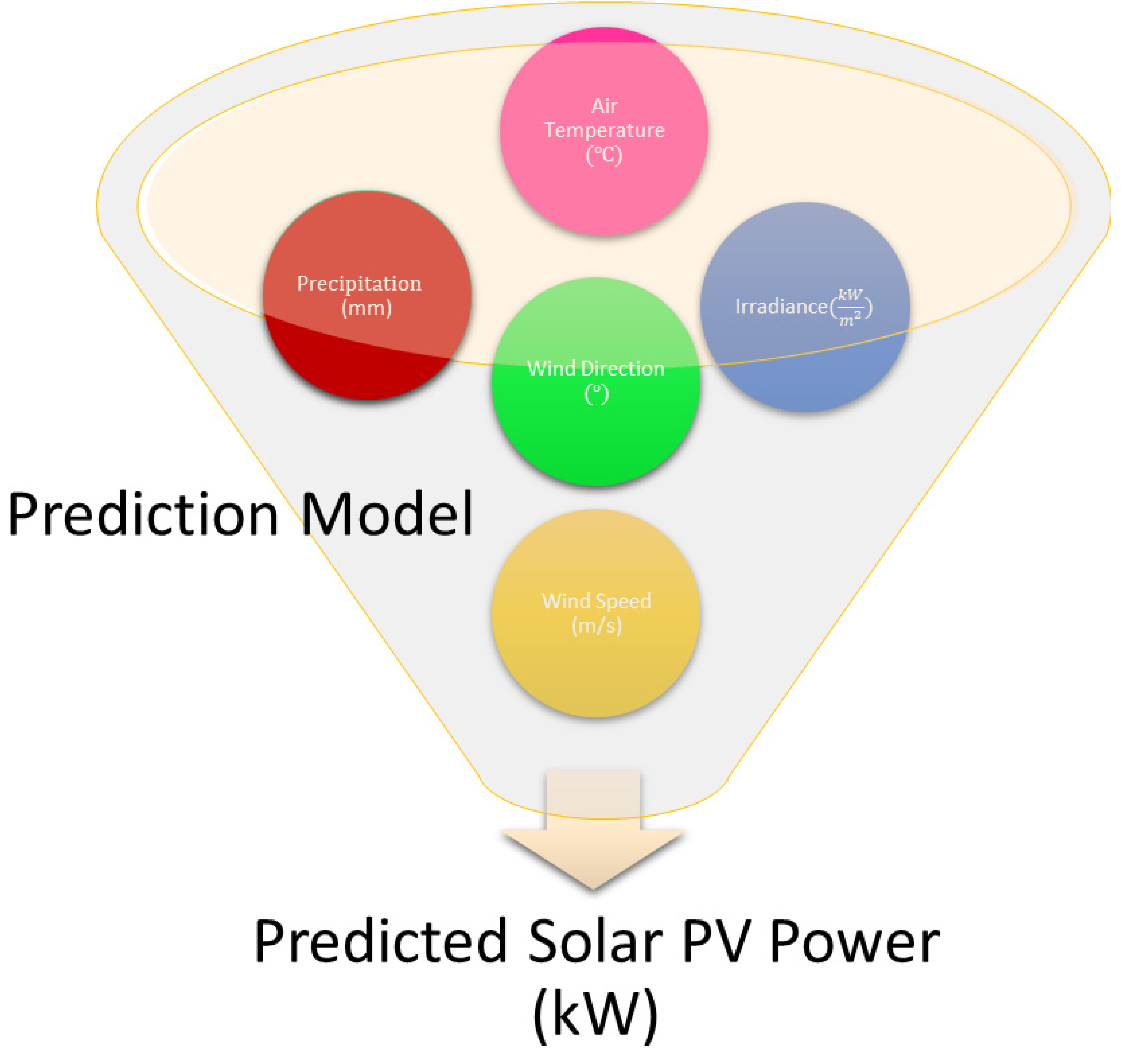
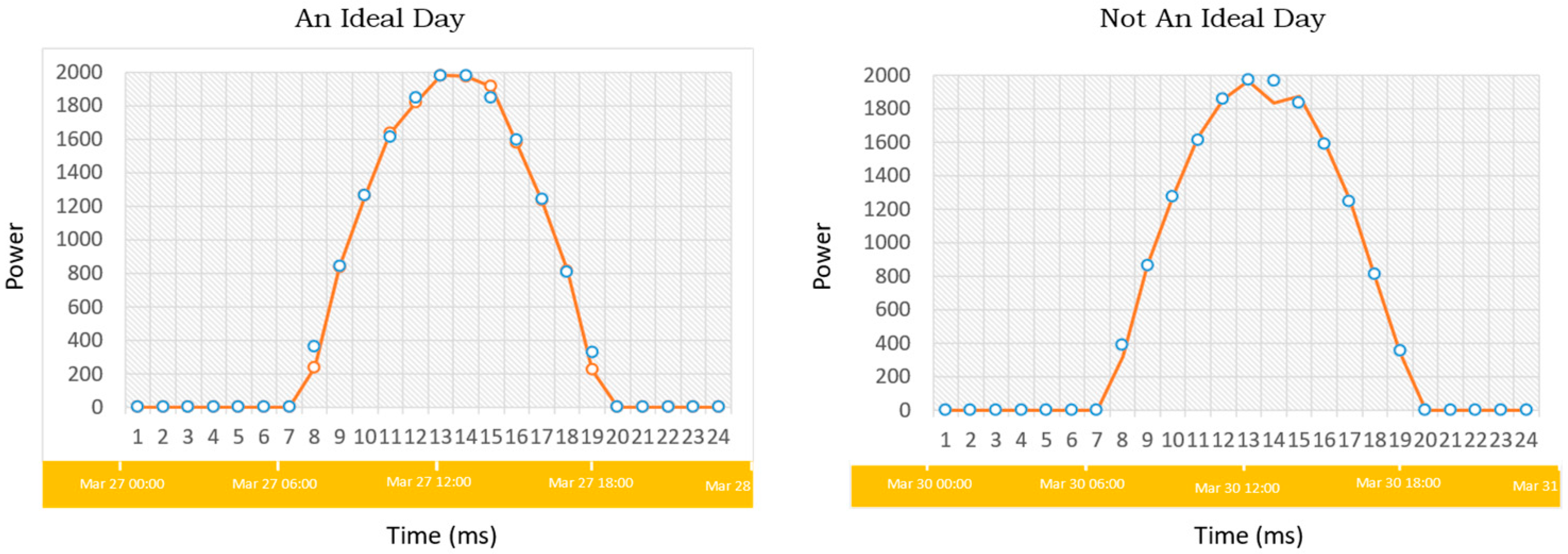
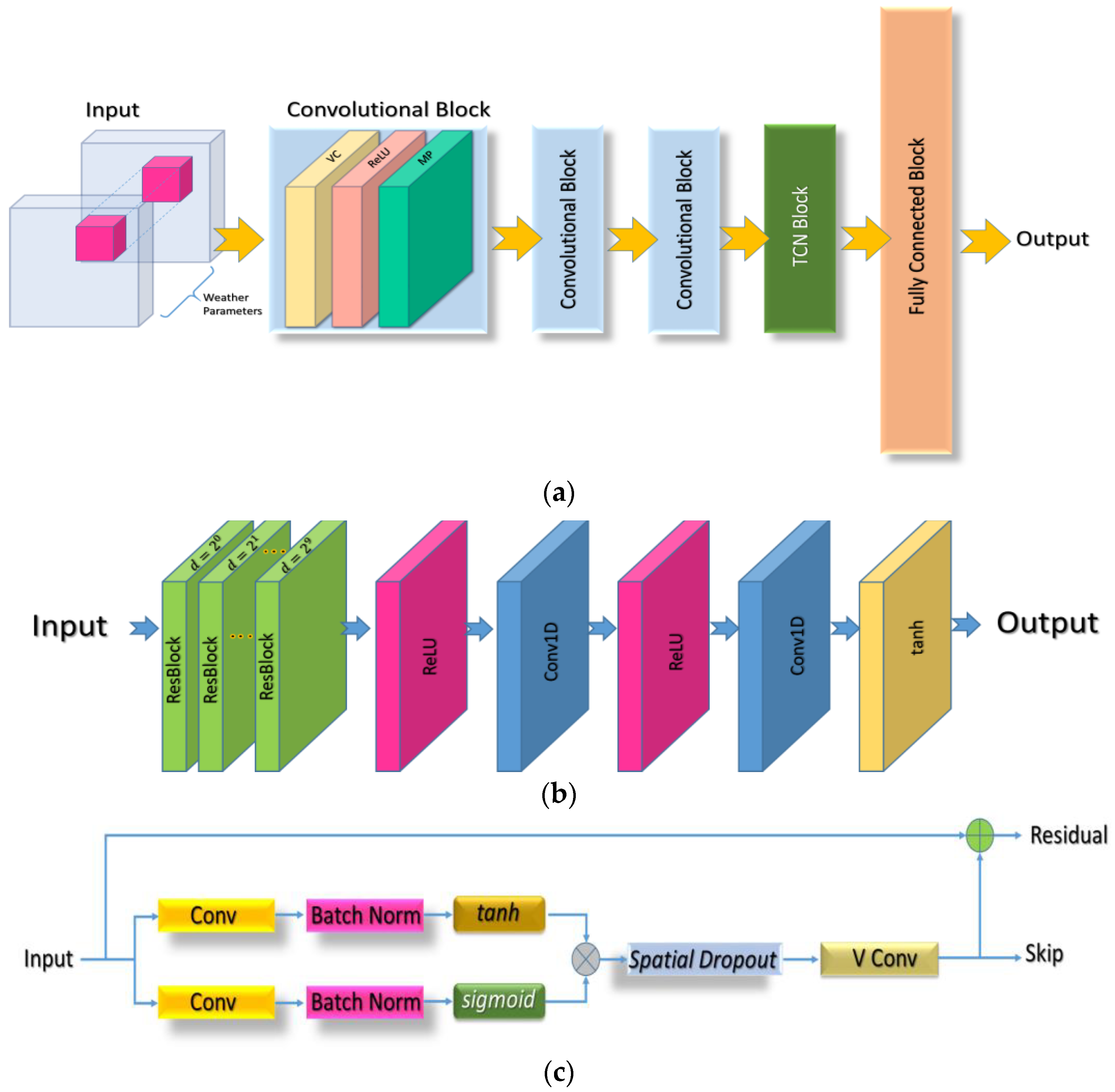
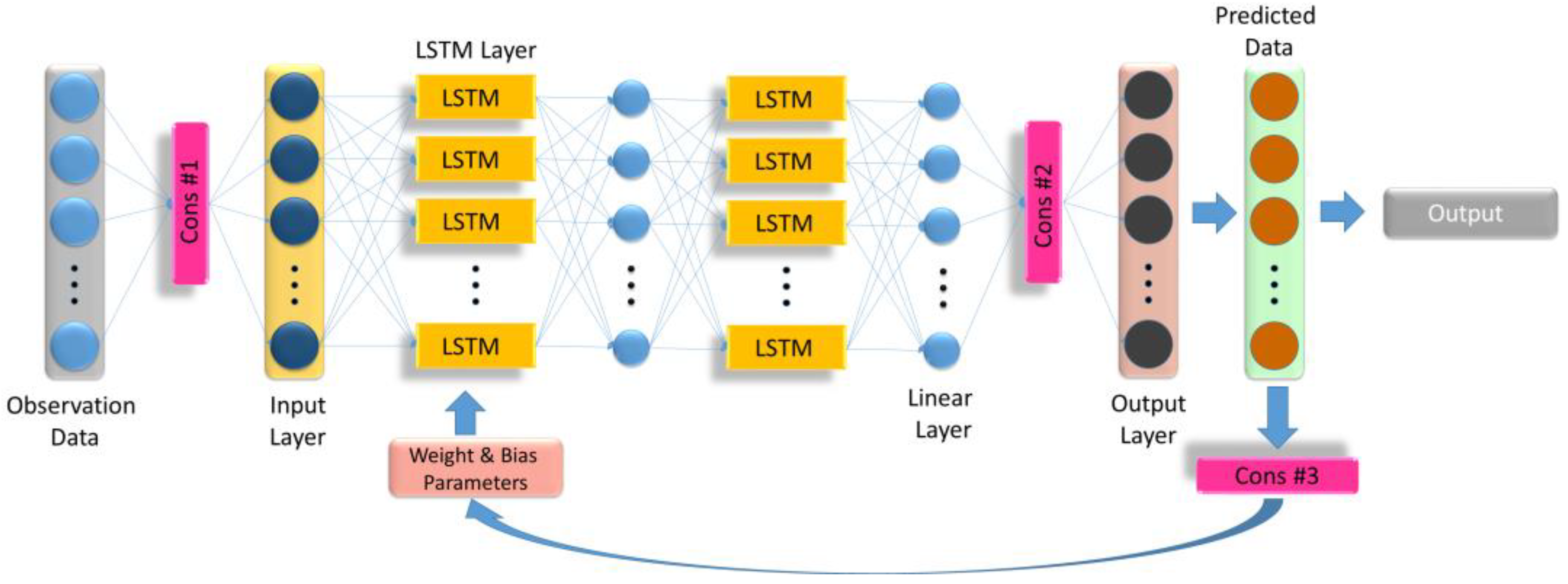

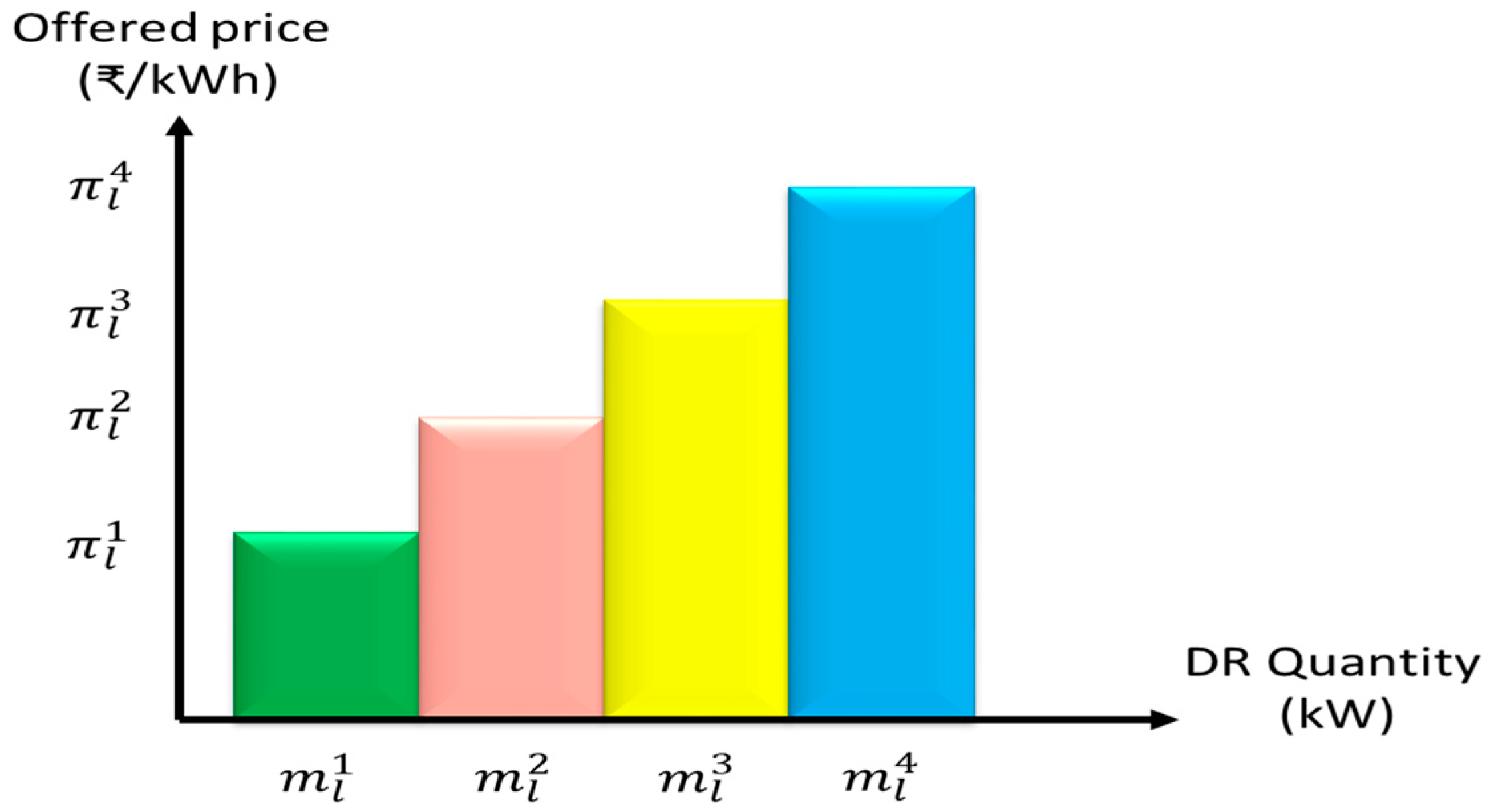
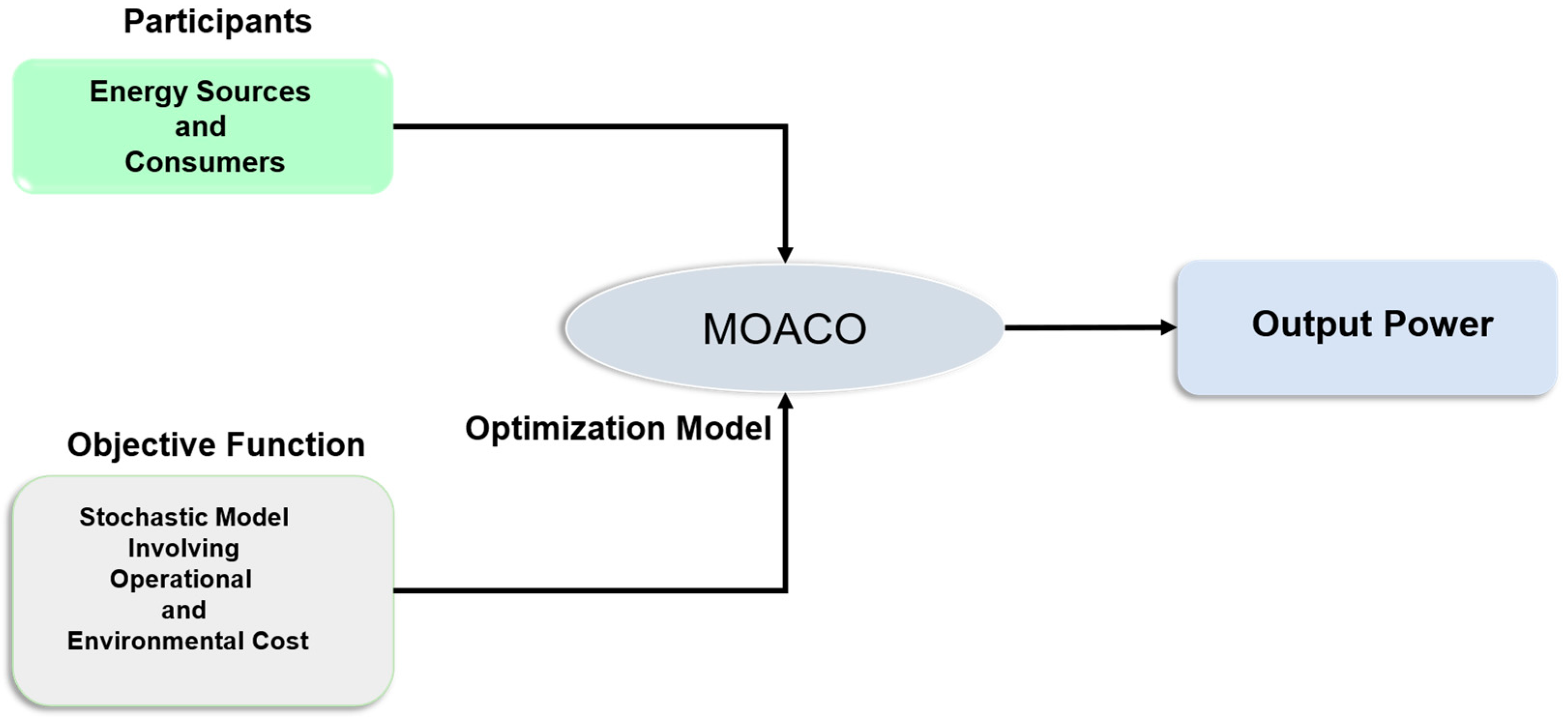
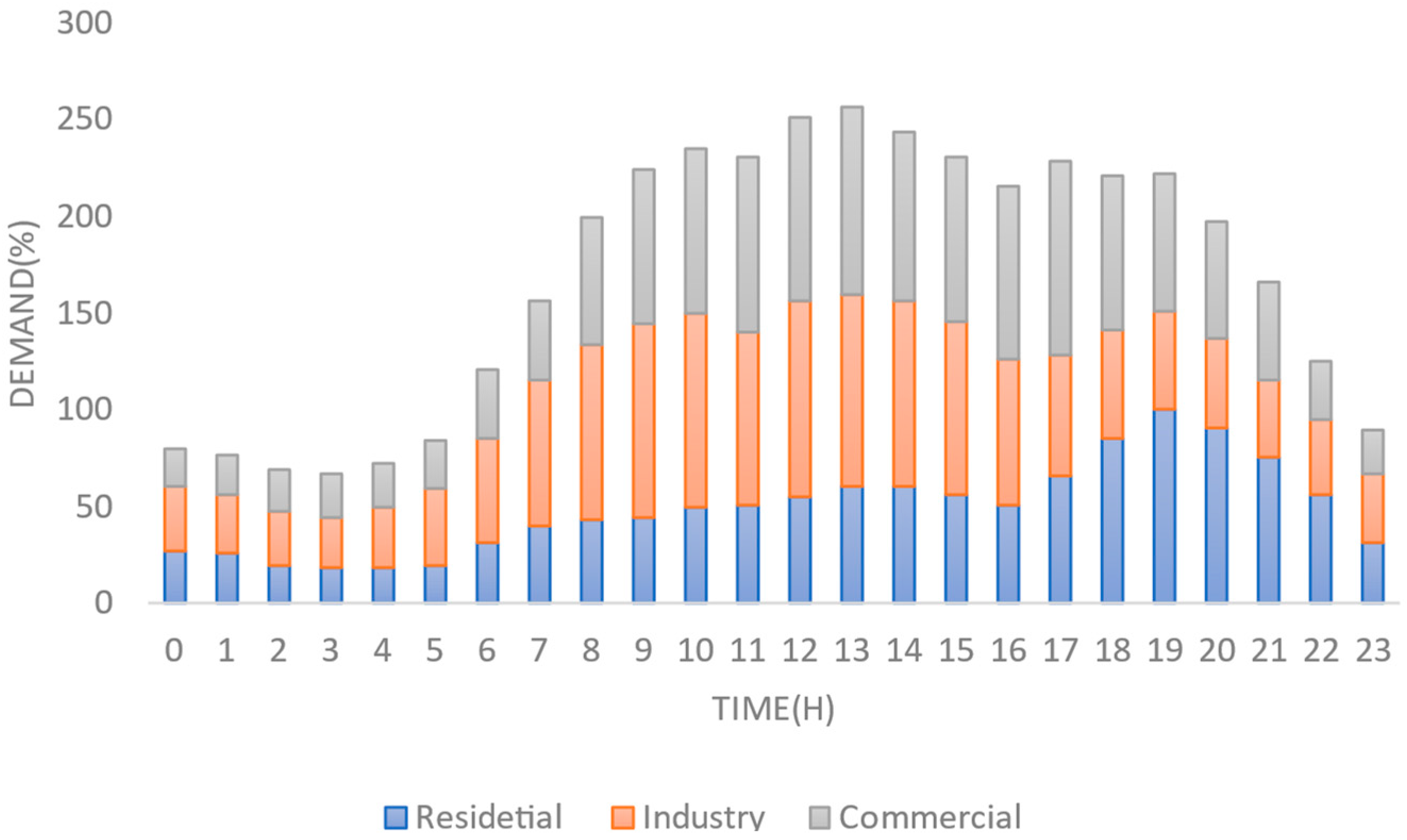



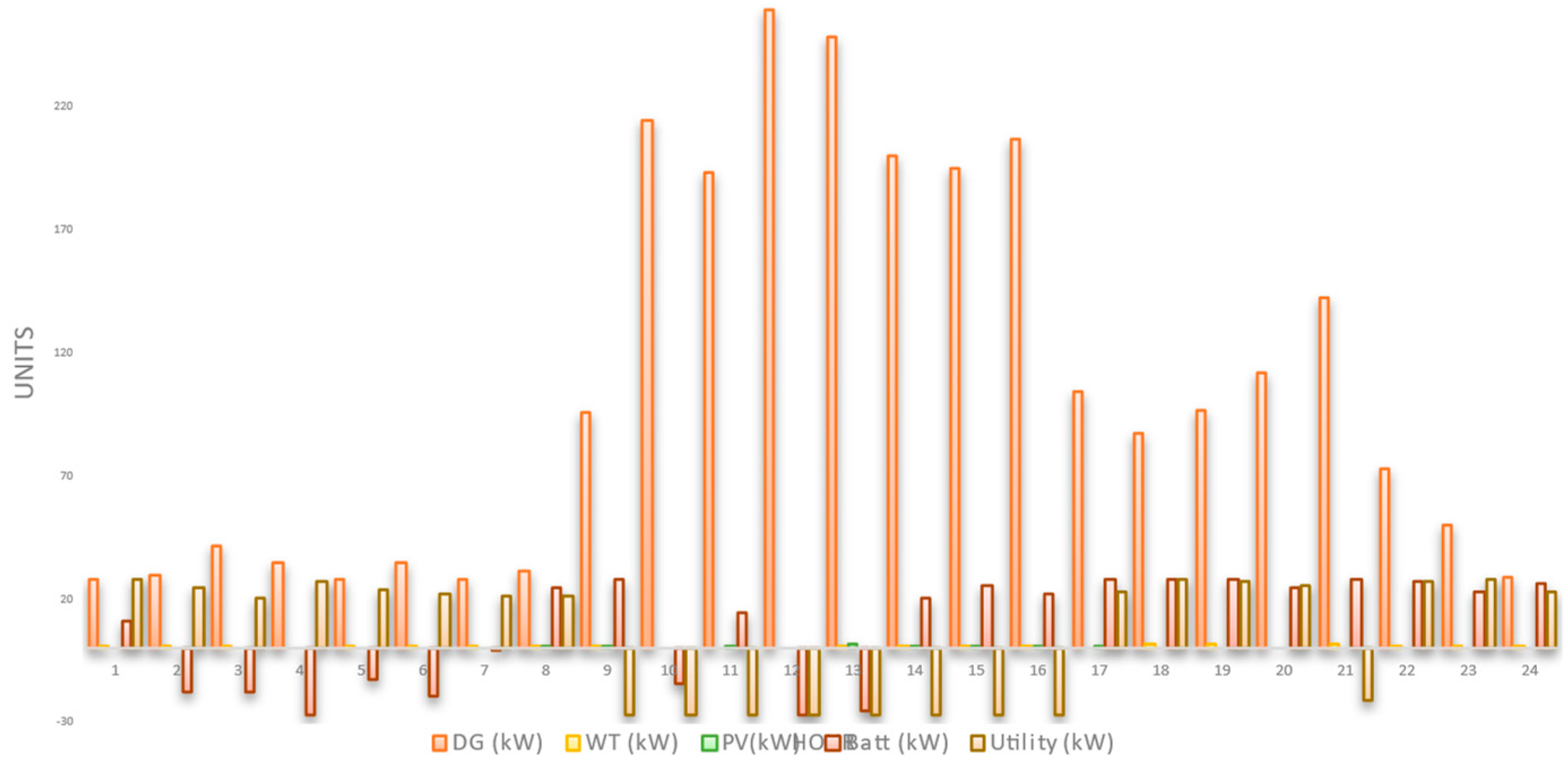
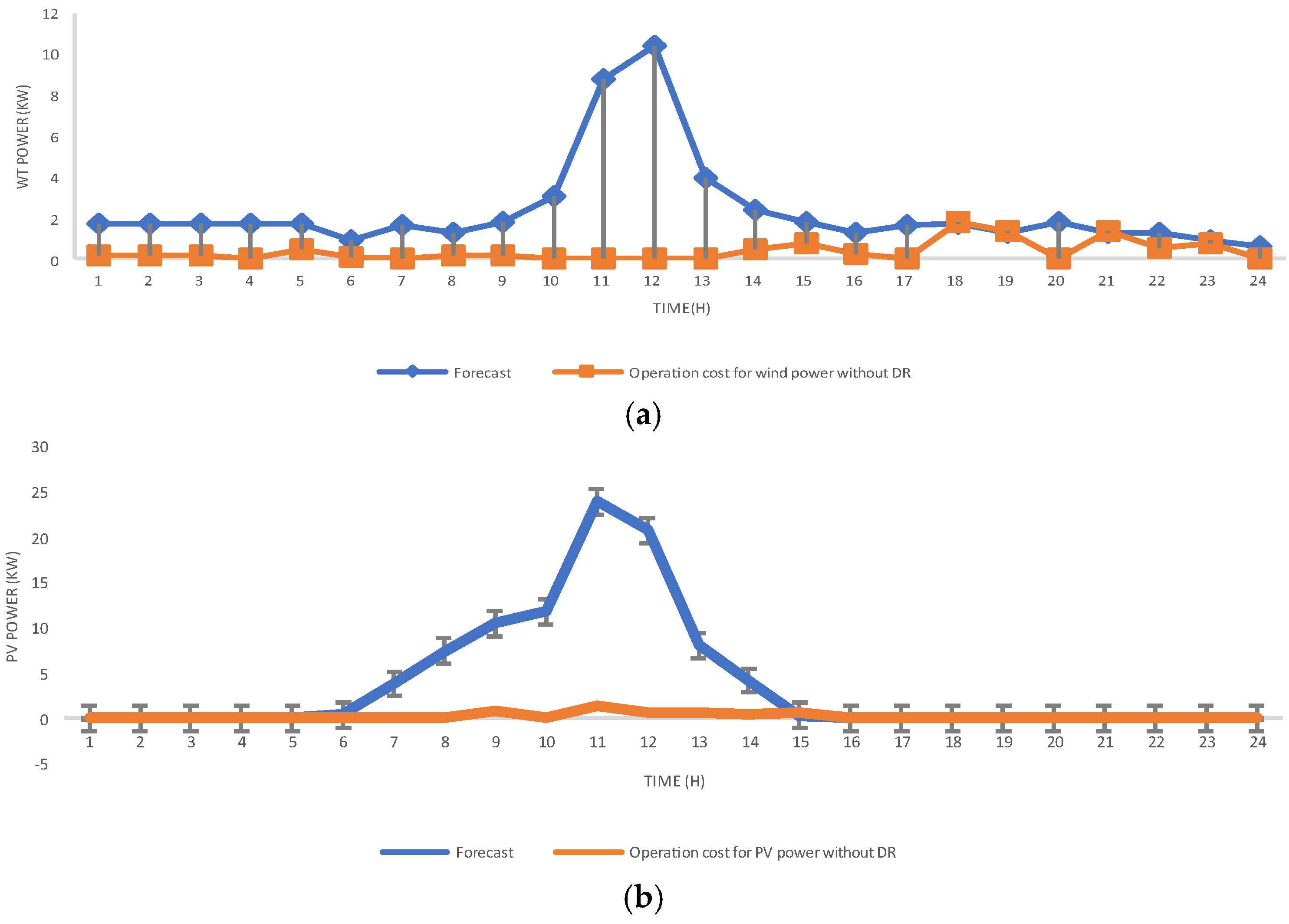
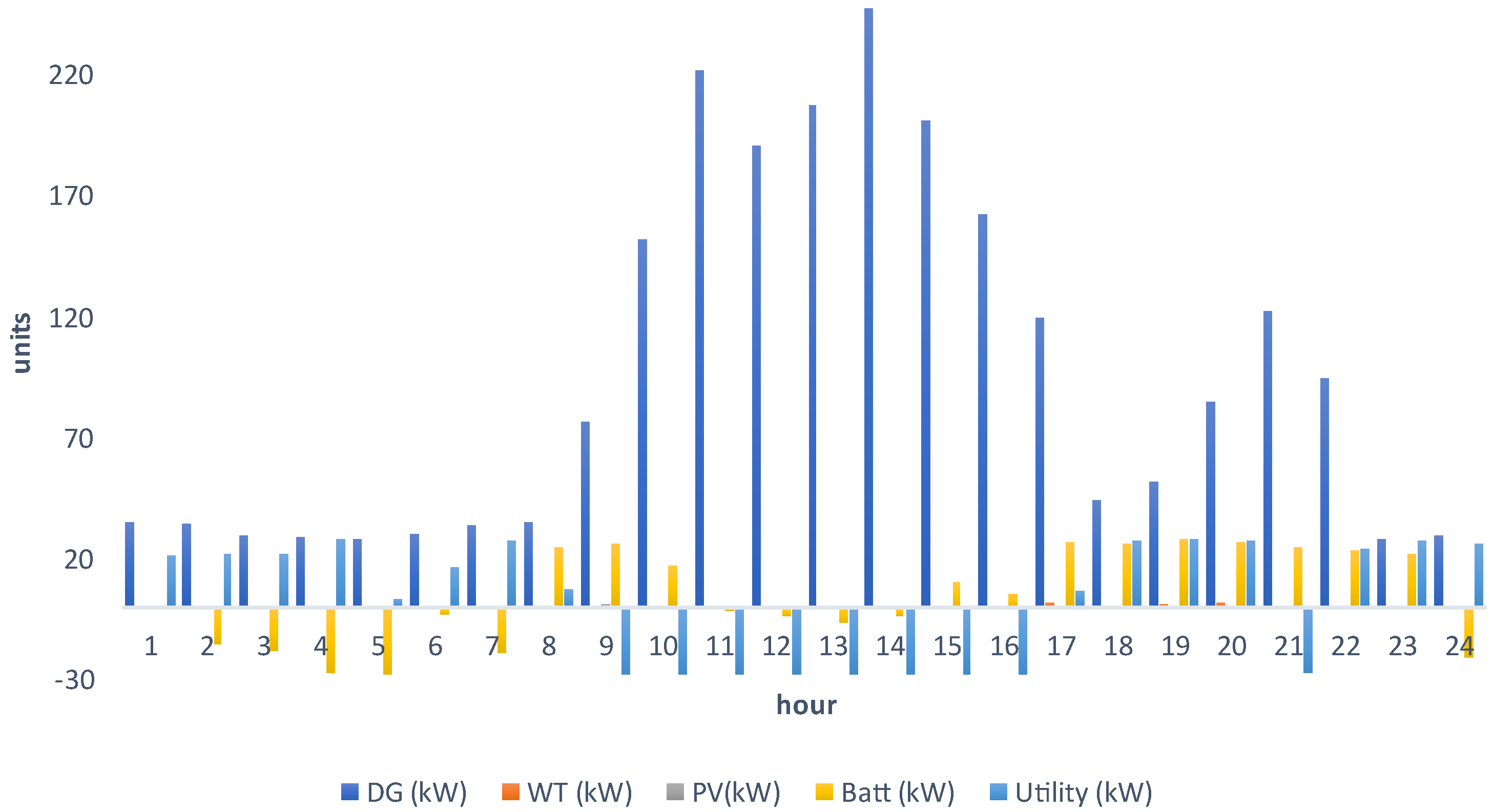
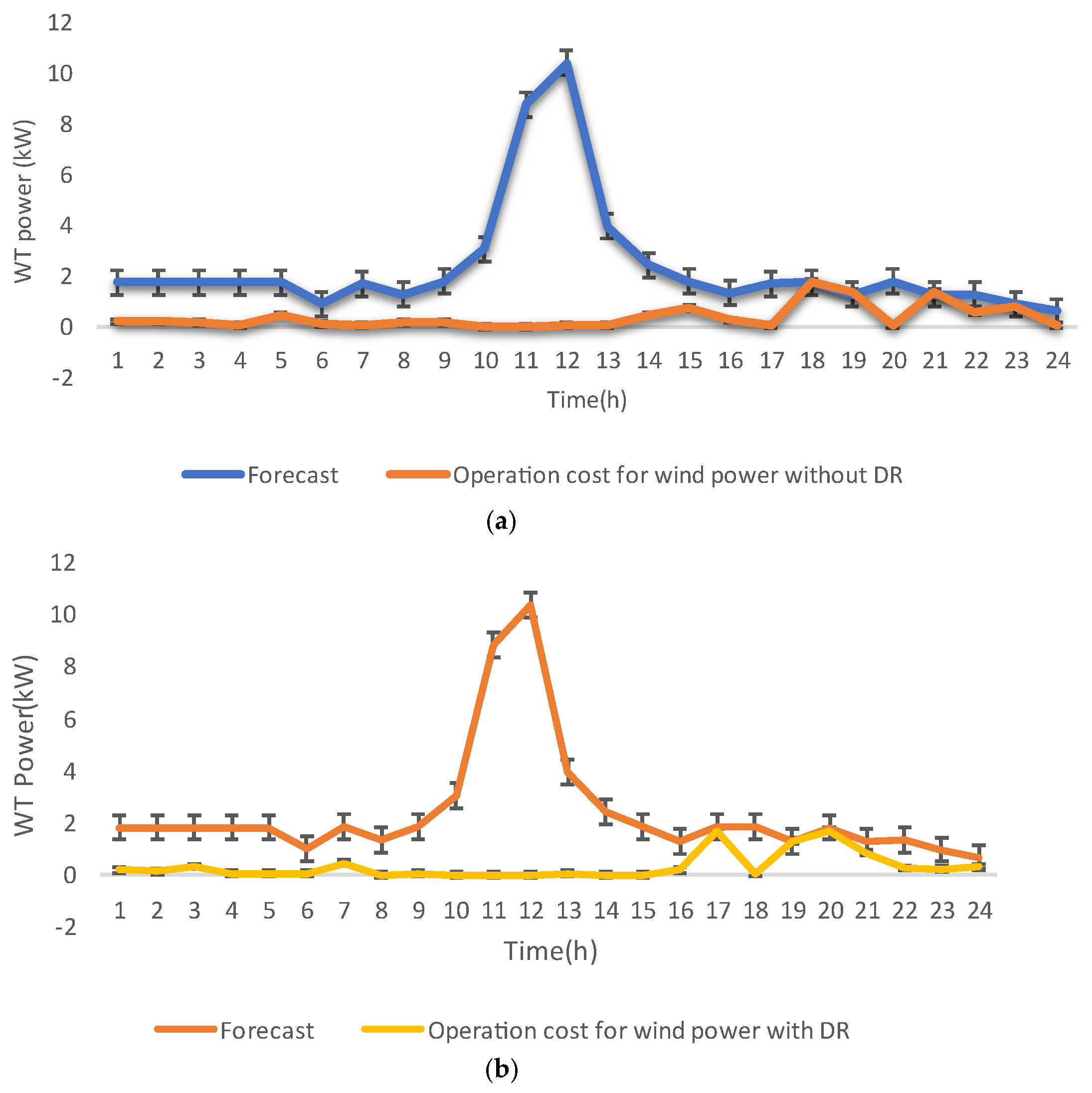

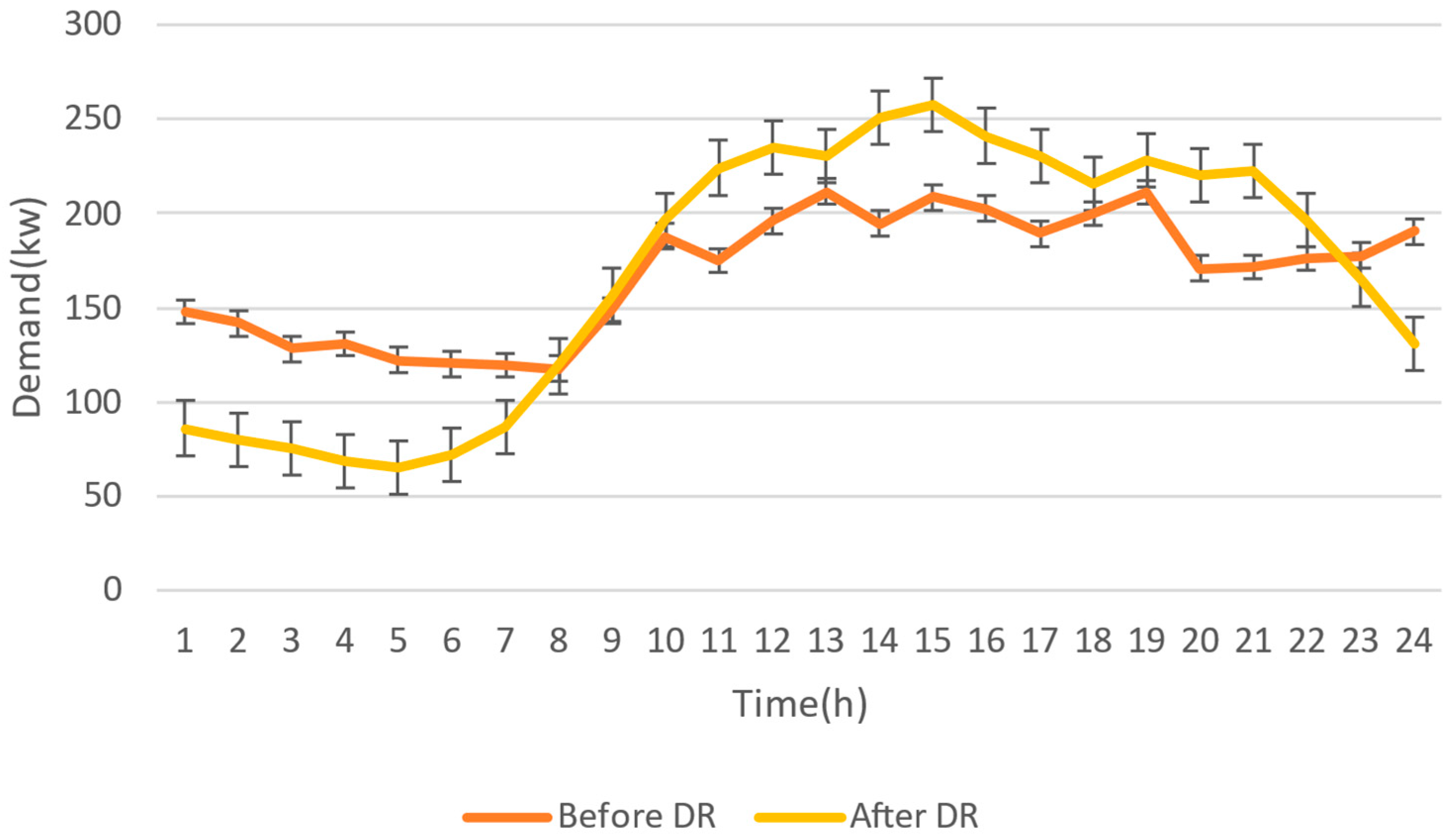
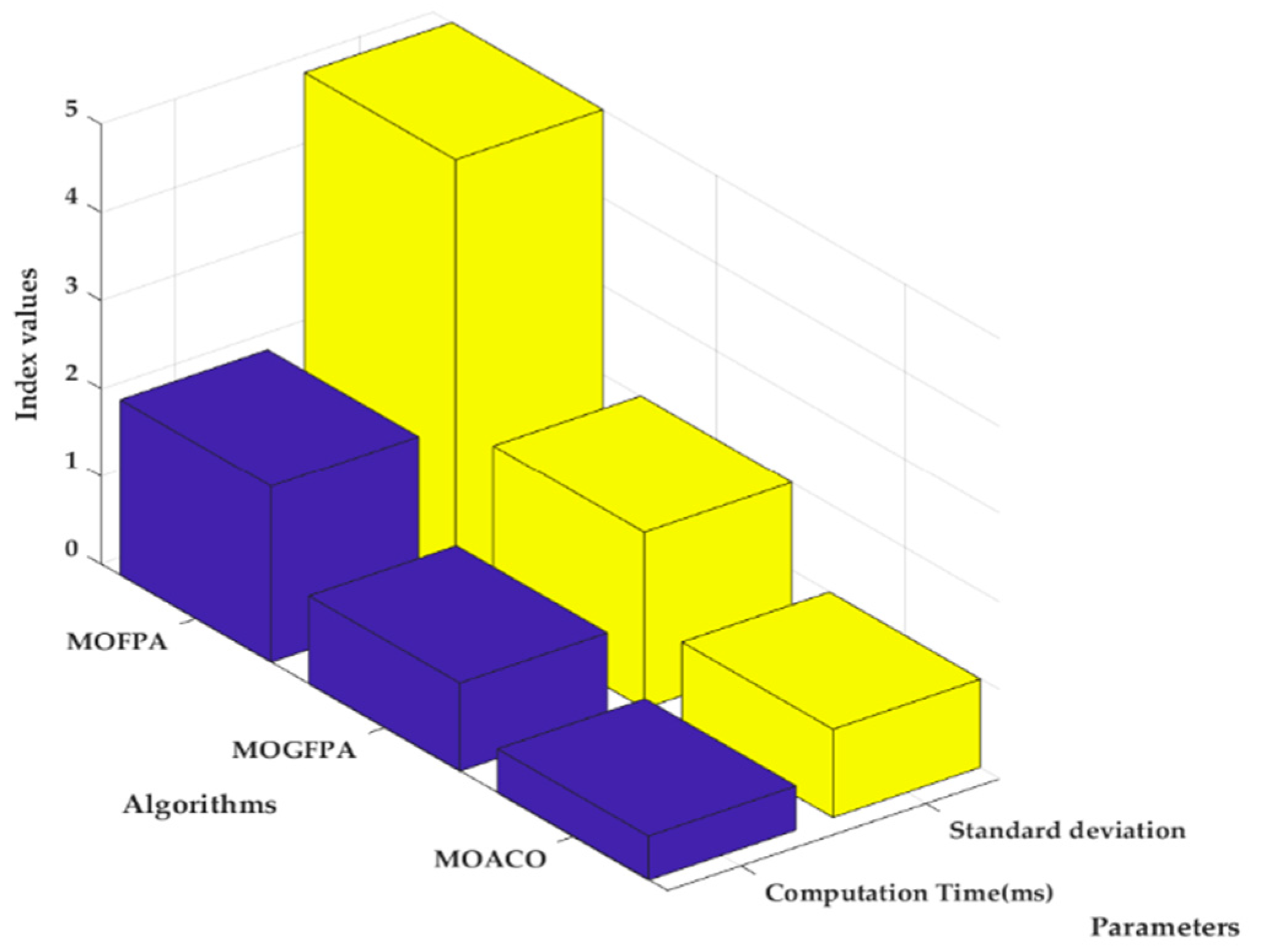
| Class | Variables |
| SP | GHI, DNI, DIF, open-sky indices, spectrum energy, and neighbour energy. |
| Weather Data | Conditions such as pressure, temperature, humidity, Wind Speed (WS), wind direction, rainfall, aerosol optical depth, and cloud cover |
| Features of Sky Images | Cloud movement vector, cloud cover ratio, image features. |
| Other | Solar zenith, azimuth, local time, solar time |
| DRP-1 | kW | 0–10 | 10–30 | 30–60 | 60–100 |
| ₹/kWh | 1.5 | 1.8 | 2.15 | 4.5 | |
| DRP-2 | kW | 0–10 | 10–40 | 40–60 | 60–80 |
| ₹/kWh | 1.25 | 1.6 | 3.2 | 4.75 |
| Algorithms | Computation Time (ms) | Standard Deviation |
|---|---|---|
| MOFPA | 2 | 5 |
| MOGFPA | 1 | 2 |
| MOACO | 0.5 | 1 |
Disclaimer/Publisher’s Note: The statements, opinions and data contained in all publications are solely those of the individual author(s) and contributor(s) and not of MDPI and/or the editor(s). MDPI and/or the editor(s) disclaim responsibility for any injury to people or property resulting from any ideas, methods, instructions or products referred to in the content. |
© 2023 by the authors. Licensee MDPI, Basel, Switzerland. This article is an open access article distributed under the terms and conditions of the Creative Commons Attribution (CC BY) license (https://creativecommons.org/licenses/by/4.0/).
Share and Cite
Arumugham, V.; Ghanimi, H.M.A.; Pustokhin, D.A.; Pustokhina, I.V.; Ponnam, V.S.; Alharbi, M.; Krishnamoorthy, P.; Sengan, S. An Artificial-Intelligence-Based Renewable Energy Prediction Program for Demand-Side Management in Smart Grids. Sustainability 2023, 15, 5453. https://doi.org/10.3390/su15065453
Arumugham V, Ghanimi HMA, Pustokhin DA, Pustokhina IV, Ponnam VS, Alharbi M, Krishnamoorthy P, Sengan S. An Artificial-Intelligence-Based Renewable Energy Prediction Program for Demand-Side Management in Smart Grids. Sustainability. 2023; 15(6):5453. https://doi.org/10.3390/su15065453
Chicago/Turabian StyleArumugham, Vinothini, Hayder M. A. Ghanimi, Denis A. Pustokhin, Irina V. Pustokhina, Vidya Sagar Ponnam, Meshal Alharbi, Parkavi Krishnamoorthy, and Sudhakar Sengan. 2023. "An Artificial-Intelligence-Based Renewable Energy Prediction Program for Demand-Side Management in Smart Grids" Sustainability 15, no. 6: 5453. https://doi.org/10.3390/su15065453
APA StyleArumugham, V., Ghanimi, H. M. A., Pustokhin, D. A., Pustokhina, I. V., Ponnam, V. S., Alharbi, M., Krishnamoorthy, P., & Sengan, S. (2023). An Artificial-Intelligence-Based Renewable Energy Prediction Program for Demand-Side Management in Smart Grids. Sustainability, 15(6), 5453. https://doi.org/10.3390/su15065453







